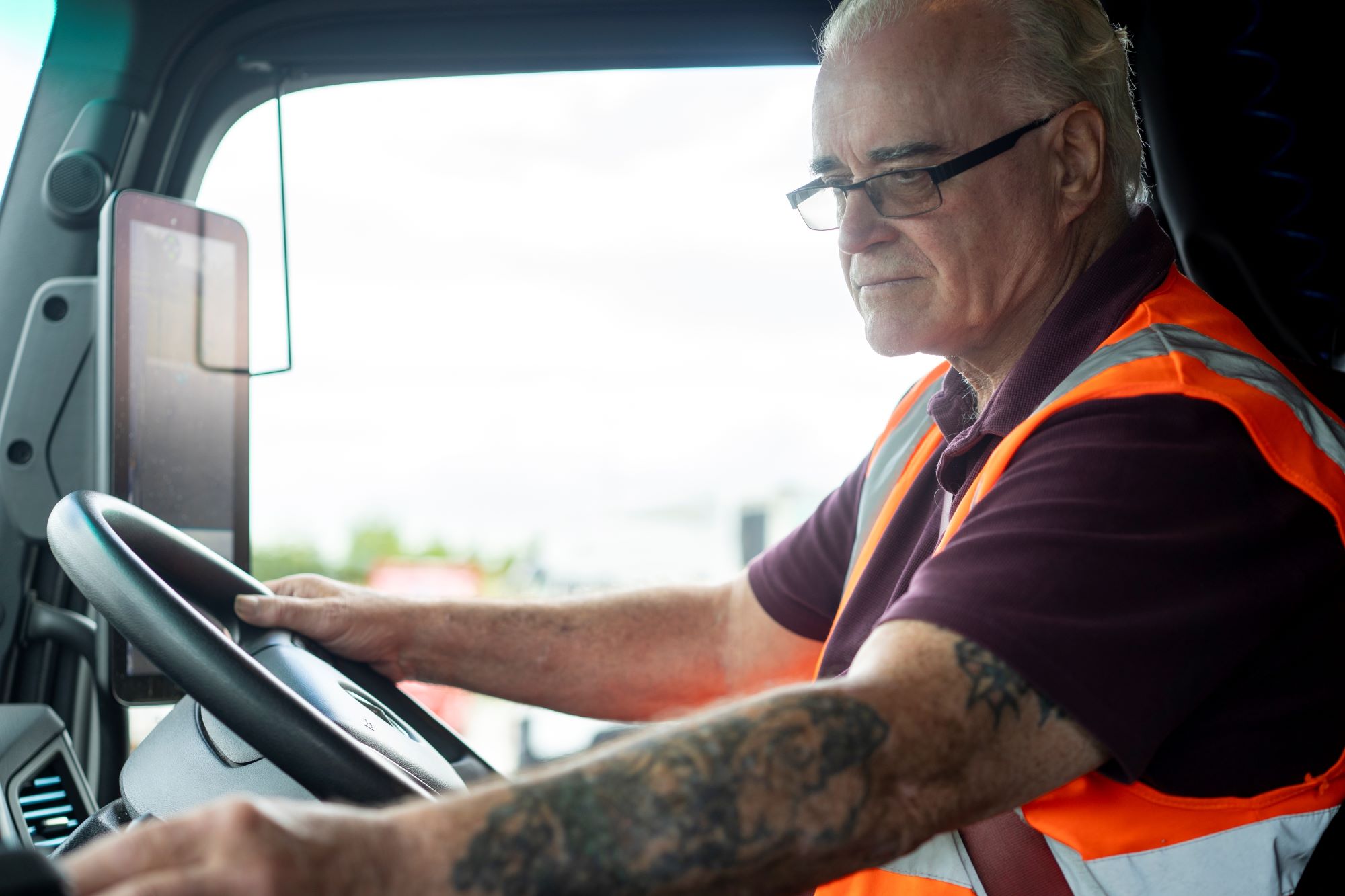
Guest
Ali lahko tovornjaki v Evropi vozijo ob nedeljah?
Ustvarjeno: 23. 12. 2024
•
Posodobljeno: 23. 12. 2024
Za obvladovanje prepovedi nedeljske vožnje tovornjakov po Evropi je potrebno celovito razumevanje predpisov v posameznih državah, sezonskih razlik in učinkovitih strategij. Z vlaganjem v temeljito načrtovanje poti, obveščanjem, optimizacijo dejavnosti in uporabo tehnologije lahko podjetja z voznimi parki ublažijo vpliv teh omejitev.
V tem prispevku raziskujemo različna pravila v različnih evropskih državah in se seznanjamo z najboljšimi načini, kako se jim prilagoditi.
Predpisi za posamezne države
Vsaka država ima svoje zakone o prepovedi nedeljske vožnje, ki se lahko zelo razlikujejo.
Nemčija
Zadnji dan v tednu od 12. do 22. ure ni dovoljeno voziti tovornjakov, ki presegajo 7,5 tone. Vendar to ni nujno odvračilno. Za kombinirane prevoze so na voljo posebne olajšave: železniški in cestni prevoz je dovoljen do 200 kilometrov od nakladalnih ali razkladalnih postaj, pristaniški ali cestni prevoz pa do 150 kilometrov od pristanišč. Izvzet je tudi prevoz določenega pokvarljivega blaga, kot so sveže mleko, mlečni izdelki, meso, ribe, sadje in zelenjava.
Poleg tega prepoved ne velja za nekatera vozila in dejavnosti, na primer za vozila za nujne primere, ki se ukvarjajo z oživljanjem, vleko ali okvaro.
Francija
Na tem ozemlju veljajo podobne omejitve vožnje kot v Nemčiji, in sicer za tovornjake, ki presegajo 7,5 tone. Te omejitve veljajo ob nedeljah in praznikih od 12. do 22. ure.
Poleg tega veljajo omejitve ob sobotah in na dan pred državnimi prazniki, ko je vožnja prepovedana od 22. do 24. ure. Poleti so določene sobote prepovedane od 7. do 19. ure.
Izjeme veljajo za določeno blago, vključno z mlečnimi in mesnimi izdelki ter vozili za nujne primere. Kršitve teh prepovedi se lahko kaznujejo z visokimi globami, ki za posameznike in podjetja znašajo od 750 do 3 750 EUR.
Italija
V Italiji tovornjaki ob nedeljah in praznikih od 9. do 22. ure ne smejo na ceste. Velja omeniti, da se junija, julija, avgusta in septembra embargo začne prej, ob 7. uri zjutraj - čeprav se še vedno konča ob 22. uri.
V državi veljajo dodatne omejitve tudi v poletnih mesecih. Julija velja sobotni embargo od 8. do 16. ure, avgusta pa od 8. do 22. ure.
Čeprav so to splošna pravila, je treba vedeti, da lahko na določenih poteh obstajajo lokalne spremembe ali začasne omejitve. Podobno kot v Franciji in Nemčiji lahko tudi tu veljajo nekatere izjeme za določene vrste blaga ali reševalne službe.
Španija
Pri Španiji je scenarij veliko bolj zapleten. Obstajajo številne regionalne prepovedi, zlasti v Kataloniji. Omejitve za vožnjo tovornjakov se lahko spreminjajo glede na lokalne predpise, državne praznike in posebne poti. Tovornjakarji, ki poslujejo na tem območju, se morajo seznaniti z lokalnimi smernicami, da bi zagotovili skladnost s predpisi.
Poleg prepovedi ob nedeljah in praznikih veljajo tudi omejitve ob nekaterih sobotah v poletnih mesecih. Te običajno veljajo od 8. do 12. ure, zlasti julija in avgusta, ko je promet zaradi dopustnikov bolj obremenjen.
Druge države
V drugih evropskih državah je veliko takih, ki prav tako uveljavljajo svoje prepovedi nedeljske vožnje. Avstrija na primer določa, da tovornjaki, ki tehtajo več kot 7,5 tone, ob nedeljah od 12. do 22. ure ne smejo na ceste. Podobno velja tudi v Švici, kjer vozila, ki presegajo 3,5 tone, ne smejo voziti ves dan.

Strategije za podjetja z voznim parkom
Za premagovanje nedeljskih omejitev vožnje tovornjakov je ključnega pomena učinkovito načrtovanje poti. Z uporabo napredne tehnologije in strateškega razmišljanja lahko upravljavci voznih parkov optimizirajo svoje postopke.
Uporabljajte GPS in programsko opremo za načrtovanje poti
Uporaba sodobnih sistemov GPS in programske opreme za načrtovanje poti omogoča voznim parkom in njihovim voznikom, da določijo najučinkovitejše poti in se izognejo območjem s prepovedjo vožnje. Ta orodja lahko v realnem času posredujejo najnovejše informacije o razmerah na cestah, kar zagotavlja, da lahko vozniki tovornjakov na poti sprejemajo utemeljene odločitve.
Razmislite o alternativnih poteh
Druga zamisel je, da raziščete različne načine, kako priti do zadevnega kraja. Čeprav je morda mamljivo, da se držite najbolj neposredne poti, lahko z alternativnimi potmi pogosto prihranite čas in se izognete morebitnim kaznim. Takšni obvozi so lahko nekoliko daljši, vendar lahko pomagajo zaobiti območja s strogimi embargi, kar omogoča nemoteno delovanje.
Načrt za zamude
Glede na možnost zastojev zaradi prometnih zastojev ali embarga na vožnjo je pametno, da podjetja, ki se ukvarjajo z voznim parkom, v svoje urnike vključijo dodaten čas. Proaktiven pristop zagotavlja boljše možnosti za pravočasne dobave - tudi ob nepričakovanih izzivih.
Bodite obveščeni
Prav tako pomembno je, da ste seznanjeni s predpisi in prometnimi razmerami v realnem času. Zato je pametno uporabljati posebne aplikacije in spletna mesta, ki voznikom tovornjakov v živo posredujejo najnovejše informacije o zaporah cest, nesrečah in zastojih ter jim omogočajo, da prilagodijo svoje poti in se izognejo morebitnim zamudam.
Številna prometna združenja in ponudniki logističnih storitev ponujajo naročniške storitve za prometna opozorila. S prijavo na ta obvestila lahko upravljavci voznega parka prejemajo informacije o morebitnih spremembah prometnih predpisov in tako zagotovijo, da jih bodo upoštevali.
Uporaba tehnologije
Uporaba tehnologije lahko poveča operativno učinkovitost in skladnost s predpisi o času vožnje.
Telematski sistemi omogočajo podjetjem, ki upravljajo vozne parke, da spremljajo lokacijo vozila, porabo goriva in vedenje voznika. Podatki so lahko neprecenljivi za optimizacijo poti. Poleg tega vodenje digitalnih dnevnikov poenostavi vodenje evidenc, kar je bistvena dokumentacija v primeru revizije.
Enako pomembna je tehnologija za poenostavitev plačil - in pri tem lahko pomaga SNAP.
Prijavite se na SNAP
Ne glede na to, ali iščete varno parkiranje, pranje tovornjakov ali druge storitve za svoje vozne parke, je plačevanje z našimi rešitvami veliko bolj priročno. Oglejte si, kaj vam lahko SNAP ponudi že danes.



